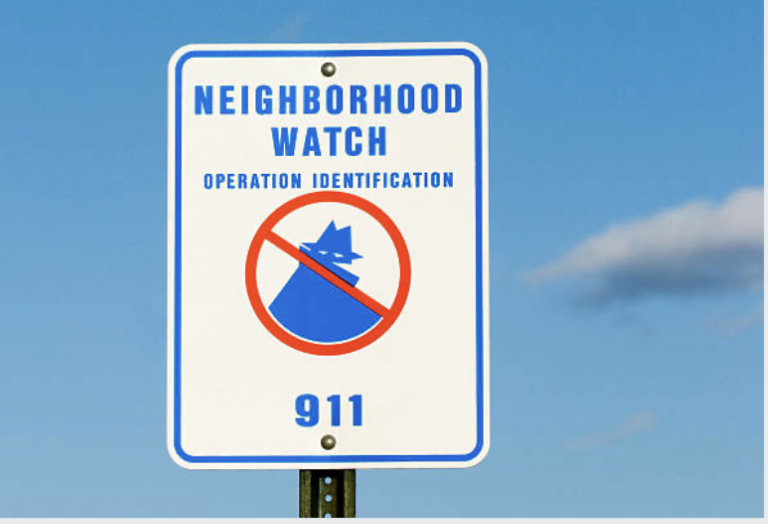Crime Prevention and Control


Introduction
Crime prevention and control encompass a range of strategies and actions aimed at reducing criminal activities within society. Crime prevention involves proactive measures focusing on preventing criminal acts from occurring by addressing root causes and risk factors. On the other hand, crime control involves reactive measures to respond to and manage criminal behavior, including the apprehension and punishment of offenders. In this article, we will talk about how both approaches work together to create safer communities and maintain law and order.
Definition of Crime Prevention
Crime prevention has been defined as “a pattern of attitudes and behaviors directed both at reducing the threat of crime and enhancing the sense of safety and security to positively influence the quality of life and to develop environments where crime cannot flourish”. In another definition, it is defined as “the anticipation, recognition, and appraisal of a crime risk and the initiation of some action to remove or reduce it”.
To anticipate a crime risk is to foresee the patterns or trends of crime in a particular area or time, most probably based on reports; to recognize a crime risk is to identify it through a systematic means of collecting and analyzing data to enable the police to determine what, when, how, where, by whom, and why the criminal activity is taking place; to appraise the crime risk is to assess or evaluate it in terms of danger to the community, and such appraisal will rely heavily on data; to initiate an action is to introduce it, and in this context, action means response to the crime problem, which requires both tactical and strategic action by developing a plan, which could be short, medium or long-term; and finally, to remove or reduce the crime risk is the implementation phase and produces the results.
Three Types of Crime Prevention
The Virginia Crime Prevention Association identified three types of crime prevention which are; punitive, corrective, and mechanical or organized crime prevention.
Punitive
Punitive crime prevention focuses on deterring criminal behavior through the threat of punishment. It involves the use of legal consequences, such as imprisonment or fines, to discourage individuals from engaging in criminal activities. This approach assumes that the fear of punishment will deter potential offenders and reduce crime rates. Here are some examples of punitive crime prevention measures and their effectiveness:
Prison Sentences: When individuals are convicted of crimes, they may receive prison sentences. The threat of incarceration is intended to deter potential offenders. For example, someone might think twice about committing theft if they know they could end up in jail. However, studies have shown that the deterrent effect of prison sentences varies, and some argue that it doesn’t always reduce recidivism.
Fines: Fines are a form of punishment for various offenses, such as traffic violations. The prospect of having to pay a significant fine can deter people from breaking the law. Fines can be effective in some cases, but they may not deter individuals with limited financial resources.
Three-Strike Laws: Some jurisdictions have implemented “three-strike” laws, where individuals who commit three serious crimes can face life imprisonment. This approach aims to remove habitual offenders from society. While it may deter some repeat offenders, critics argue that it can lead to disproportionately harsh sentences for non-violent offenses.
Death Penalty: The death penalty is the most severe punitive measure, intended to deter the most heinous crimes, like murder. However, the effectiveness of the death penalty as a deterrent is a matter of ongoing debate, and it has been abolished in many countries due to concerns about wrongful convictions and ethical considerations.
Mandatory Minimum Sentences: These laws require judges to impose a minimum sentence for certain crimes. For instance, drug offenses might carry mandatory minimum sentences. Critics argue that such laws can lead to unjust outcomes and don’t always address the root causes of criminal behavior.
Corrective
Corrective crime prevention focuses on addressing the underlying causes of criminal behavior and rehabilitating offenders to prevent them from committing future crimes. It is the direct opposite of the punitive method of crime prevention that focuses on punishment. Here are some examples of corrective crime prevention measures:
Probation and Parole: Instead of imprisonment, some offenders are placed on probation or parole, where they are supervised in the community. These programs aim to reintegrate offenders into society, often through counseling, drug treatment, or vocational training.
Restorative Justice: Restorative justice programs bring together offenders, victims, and the community to repair the harm caused by the crime.
Education and Skills Training: Providing education and vocational training opportunities to inmates can prepare them for employment upon release. Teaching offenders valuable skills can reduce their likelihood of returning to a life of crime. For instance, offering GED programs or job training in prisons.
Counseling and Therapy: Offenders with mental health or substance abuse issues may benefit from counseling and therapy programs. These services can help address the underlying causes of their criminal behavior.
Juvenile Diversion Programs: Instead of sending young offenders to juvenile detention centers, diversion programs aim to keep them out of the criminal justice system. These programs often involve community-based interventions, counseling, and education to help steer juveniles away from criminal behavior.
Halfway Houses: Halfway houses or residential reentry centers provide a transitional environment for offenders reentering society after incarceration. They offer a structured setting with counseling and support services to help individuals reintegrate successfully.
Mechanical or organized
Mechanical or organized methods of crime prevention involve implementing physical or structural measures to reduce the opportunity for criminal activity. These methods focus on making it more difficult for crimes to occur. Few examples:
Surveillance Cameras: Installing surveillance cameras in public places, businesses, and residential areas can deter criminal behavior and provide evidence for law enforcement. For example, a convenience store might have security cameras to discourage theft.
Access Control Systems: Access control systems, such as key card entry or biometric scanners, restrict entry to authorized individuals.
Alarm Systems: Alarm systems with sensors for doors, windows, and motion detection can alert homeowners or security personnel to potential intruders. These systems can deter burglaries and break-ins.
Street Lighting: Adequate street lighting in public areas can deter criminal activity by increasing visibility.
Fencing and Barriers: Fencing and barriers around properties can deter trespassing and unauthorized entry. For instance, a gated community with controlled access can reduce the risk of burglaries.
Secure Storage: Providing secure storage options, such as lockers or bike racks, can prevent theft. For instance, a gym might offer lockers for members to secure their belongings.
Anti-Shoplifting Measures: Retailers often employ organized methods to prevent shoplifting, including security tags on merchandise, mirrors for increased visibility, and trained loss prevention personnel.
Vehicle Immobilization Devices: Devices like steering wheel locks or electronic immobilizers make it difficult for thieves to steal vehicles. These mechanical measures can prevent car theft.
Home Security Systems: Homeowners can install security systems that include sensors on doors and windows, as well as alarms and monitoring services, to deter break-ins.
Crime Prevention approaches have developed out of different traditions across the world. Criminologists have linked crime prevention to the medical setup of disease control which is termed “medical models” or typology of crime prevention. The model involved three stages of crime prevention;
Primary crime prevention
refers to strategies and actions that aim to stop criminal activity from occurring in the first place by addressing the underlying causes and risk factors associated with crime. This level of prevention focuses on reducing the opportunities for individuals to engage in criminal behavior and promoting a safer and more secure environment. which attempts to alter conditions that precipitate the occurrence of criminal acts. Here are some key aspects of primary crime prevention:
Risk Reduction: Primary prevention strategies identify and mitigate risk factors that can lead to criminal behavior. These factors may include poverty, lack of education, substance abuse, unemployment, and family dysfunction.
Community-Based Programs: Many primary prevention initiatives involve community engagement and collaboration. They may include after-school programs, mentorship, community policing, and neighborhood watch programs to build a sense of community and deter criminal activity.
Public Awareness and Education: Educating the public about the consequences of criminal behavior and promoting ethical values can deter potential offenders. School-based programs, public campaigns, and awareness efforts fall under this category.
Social and Economic Development: Initiatives aimed at improving economic opportunities, affordable housing, and access to healthcare can help address some of the root causes of crime, especially in disadvantaged communities.
Secondary crime prevention
involves engagement in early identification of potential offenders by seeking to intervene to prevent criminal behavior from developing.Key aspects of secondary crime prevention:
Early Intervention Programs: These programs target individuals, often youth, who display early signs of risk factors associated with criminal behavior. Early intervention may involve counseling, mentoring, educational support, or social services to redirect individuals away from criminal paths.
Diversion Programs: Instead of formal legal proceedings, diversion programs offer alternative solutions for low-level offenders. These programs may include community service, restorative justice processes, or treatment for issues like substance abuse or mental health problems.
Crisis Intervention: Crisis intervention strategies provide immediate support and assistance to individuals experiencing a crisis that could lead to criminal behavior or victimization. This could involve crisis hotlines, counseling services, or emergency shelters for those in need.
Tertiary crime prevention
This stage deals with actual offenders and interventions aimed at preventing further criminal acts and reducing recidivism.focal aspects of tertiary crime prevention:
Mental Health and Substance Abuse Treatment: Many offenders have underlying mental health or substance abuse issues. Tertiary prevention provides access to treatment and support services to address these issues, as untreated conditions can contribute to criminal behavior.
Offender Employment Programs: Tertiary prevention efforts focus on helping offenders secure stable employment after rehabilitation. These programs may involve job training, employment counseling, and partnerships with employers willing to hire individuals with criminal records.
Community-Based Support: Tertiary prevention recognizes the importance of community support in the rehabilitation process. Community organizations, faith-based groups, and mentors often play a role in assisting offenders in their transition back into society.
Another example of crime prevention around the world is the situational, social, and developmental strategies of crime prevention. Situational crime prevention aims to reduce crime through the management, design, and reinforcement of the physical environment by reducing the opportunity or making it harder to commit crime. For example, the installation of surveillance cameras in public places; increases the risk of detection, and reduces the rewards of crime, for example, making it difficult for criminals to be unidentified. Situational crime prevention is based on the classical school of criminology which posits that humans are hedonistic calculus, weighing pleasure and pain and the assumption that criminals make rational decisions about when and where to commit crime based on the perceptions of needs, risks, and payoffs.
Social crime prevention seeks to prevent crime by changing the social environment. The aim is to strengthen community bonds, increase levels of informal social control, and thus deter actual or potential criminals. Social crime control measures focus on integrating into the community, those who are at risk of committing criminal acts. It is based on the assumption that marginalization, inequality, often lies at the heart of criminal behavior.
Developmental crime prevention focuses on the individual because prevention is based on attitudinal or behavioral change of the criminal and his victim. It involves the early identification of potential offenders or victims and intervenes to keep them from realizing that potential.
From the above models of crime prevention, it is apparent that crime prevention is not the responsibility of the police alone, but an issue for society to tackle. In many parts of the world, it is common to find individual households or organizations undertaking situational crime prevention strategies through the construction of high walls, barbed-wire fences, and other security gadgets, such as surveillance cameras, all in an attempt to make it harder for the criminal to commit a crime.
On the other hand, whether crime is perceived in terms of disease, in line with the medical model, or a social issue, in line with the social model, neither the individual nor the police can handle its prevention alone, because, in this larger context, the community would have to play a definite role. It is the community’s responsibility to remove the temptation of criminality or enhance general security to protect its members from being victimized.
In crime prevention, law enforcement responsibility is limited to establishing presence, arrest, investigation, and prosecution of suspects, but in the contemporary world more often than not, we tend to hold the law enforcement officers entirely responsible for crime prevention. By maintaining a conspicuous presence on the streets, the police try to reduce the number of opportunities criminals have for committing crimes. Of course, high police visibility serves as an important public relations function as well, conveying an image of omnipresence and efficiency.
Conclusion
In sum, crime prevention and control require a balanced approach that combines proactive prevention and reactive control efforts with responsive law enforcement and legal processes. Collaboration among law enforcement agencies, communities, and support organizations is crucial in crime prevention activities for creating safer environments and reducing criminal activity.




